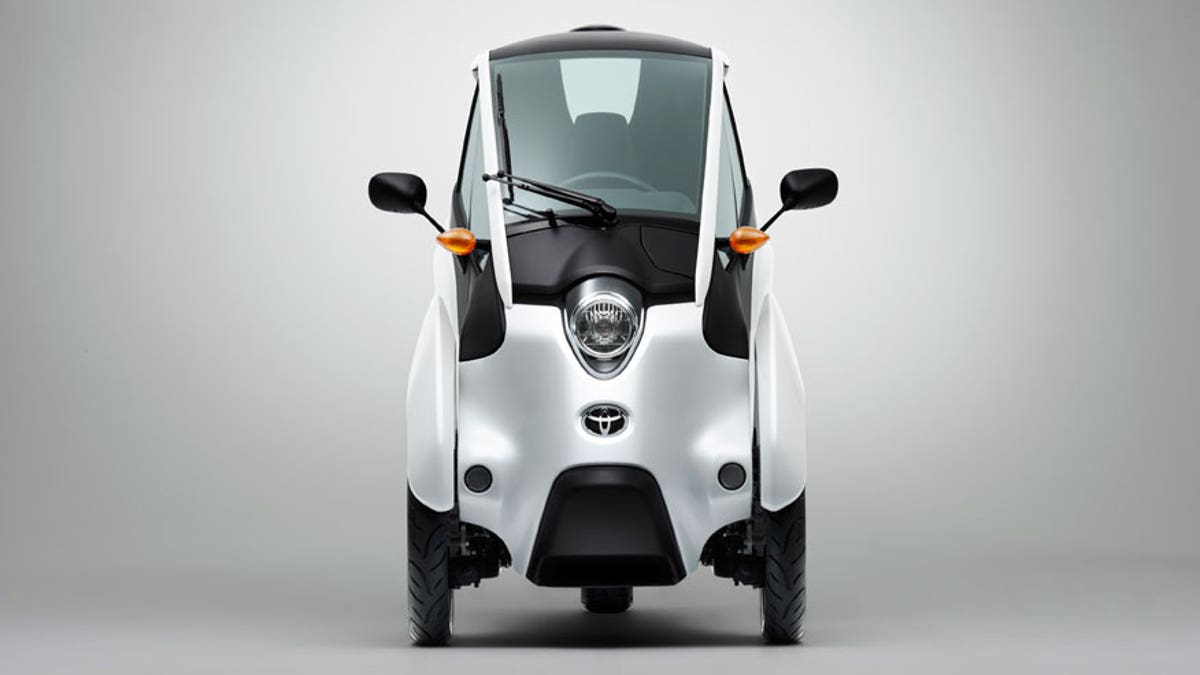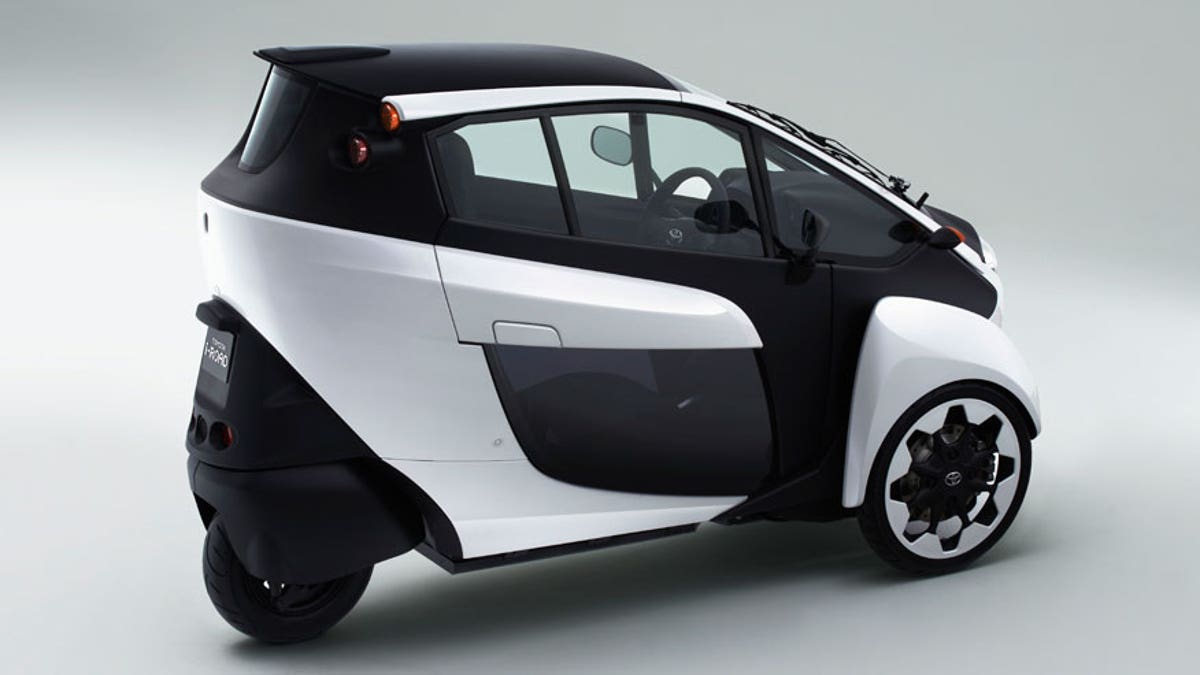Toyota's 'car' of the future
Toyota is approaching urban mobility from a different angle with its three-wheel leaning i-Road electric vehicle.
Odd vehicles are having a moment.
The Polaris Slingshot, Can-Am Spyder, Piaggio MP3, Morgan 3 Wheeler and others have been opening up minds to the idea that something exists between car and motorcycle, and the world’s largest automaker has taken note.

( )
The Toyota i-Road concept is a three-wheel electric vehicle designed to be the ultimate in personal urban transportation. Less than a yard wide, and about seven-feet long, it’s smaller than any enclosed vehicle on the road today. The Smart Fortwo is a Hummer compared to it.

( )
It has two seats, rather than a saddle, but the rear one is best left for groceries. As in a car, the driver controls the i-Road with pedals and a wheel, but when you turn the latter things get weird.

( )
The tall, narrow vehicle is gyroscopically-stabilized, so when you enter a curve it leans into it like a motorcycle, or, as Toyota prefers to describe it, a skier. Neither is exactly correct, however, since it also has rear-wheel-steering that allows it to make a U-turn within a 10-foot circle.

( )
Moving in so many directions makes for a uniquely dynamic experience, but one you quickly adjust to. There’s definitely a fun element to it, but the remarkable thing is how well it works. I didn’t get to drive it on the street, just around a twisty indoor course, where weaving through cones to the whine of the dual electric motors driving the front wheels definitely put me in a sci-fi movie groove.
As far as safety is concerned, turn too sharply or quickly and the steering wheel vibrates to warn you that you’re about to defy the laws of physics. If you don’t respond, the i-Road simply cuts power and straightens itself out to keep from falling over, which appears to be pretty much impossible to do. But while the bodywork protects you from the elements, there’s no crash safety built into it, although impact protection and airbags are under consideration for a possible production version. Nevertheless, if it were sold in the United States today, the i-Road would be considered either a motorcycle or an electric vehicle, so federal automotive safety standards would not apply.
Toyota hasn’t officially revealed how powerful the i-Road is (I’ve heard it has just 5 horsepower,) but the use of composites and carbon fiber in its construction have kept its weight to just 661 pounds and it feels pretty light on its wheels. The top speed is currently restricted to about 35 miles per hour due to the way that the i-Road classified in Japan, where it’s being tested on public roads. The Toyota representative on hand during my drive wouldn’t say if its technology would allow for higher speeds, but reiterated its intent is as a city runabout, rather than a long-distance cruiser.
To that end, its range is 30 miles per charge, which takes just two or three hours on a 110-volt outlet. Of course, finding one of those on the street isn’t easy in most places today, but part of aim of the i-Road project is to demonstrate that vehicles like this could make building the infrastructure to support them worth it.
It definitely seems to be more accessible, useful, and easier to live with than an electric scooter would, except for the fact that its doors open like doors. Each nearly doubles the width of the i-Road when you’re getting in or out, which means perpendicular parking isn’t really in the cards, unless you find a spot at the end of the block.
Note to Toyota: cars of the future have doors that open up like the ones on a Lamborghini or a DeLorean, not out, and this rule definitely applies if they aren’t really cars.
